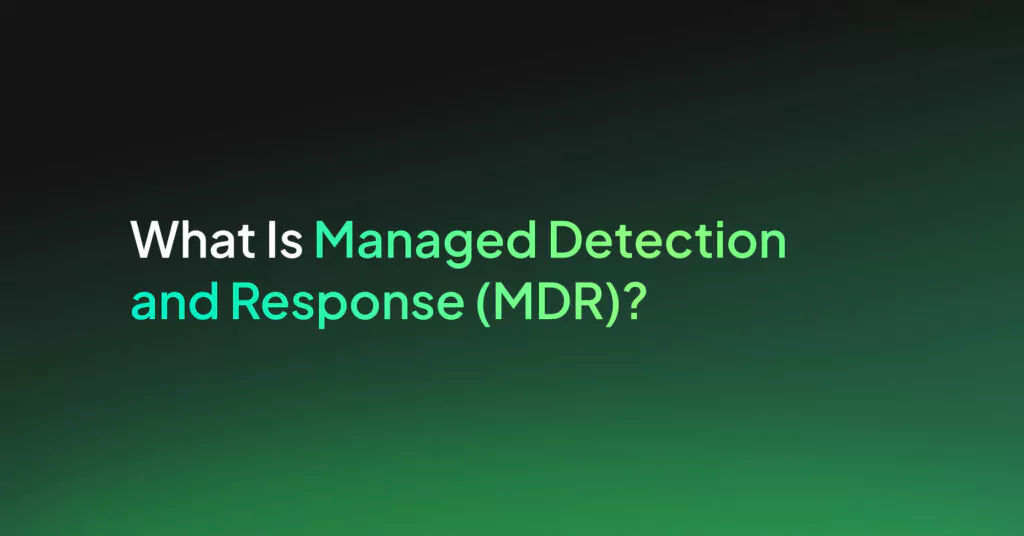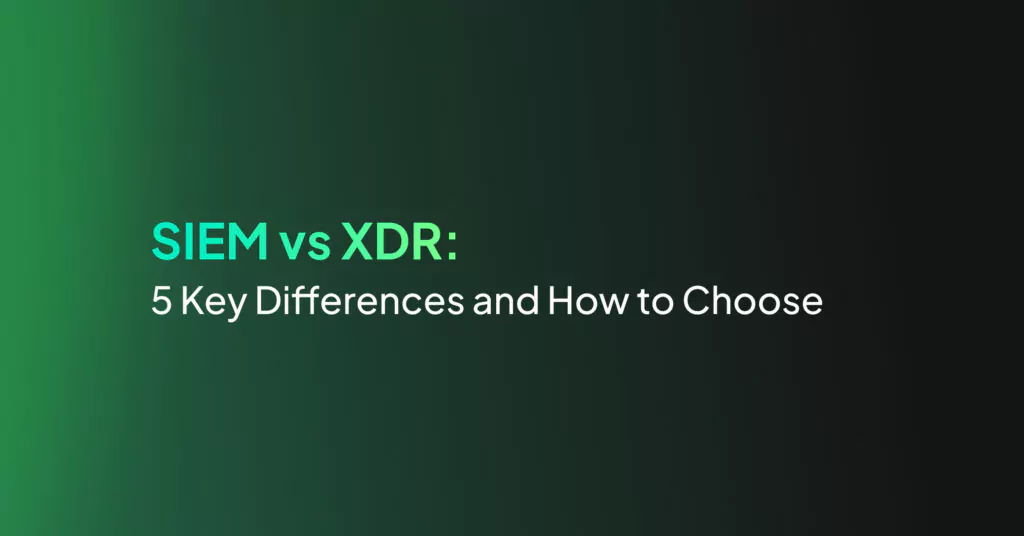Top 11 SIEM Use Cases

Key SIEM Use Cases and Examples
SIEM solutions are typically used for the following use cases.
1. Security Event Detection and Triage
SIEM aggregates logs and alerts from various sources, such as firewalls, intrusion detection systems (IDS), and antivirus tools, to identify potentially malicious activities. Using predefined rules and correlation logic, SIEM systems highlight suspicious patterns and generates alerts for security teams to investigate.
For effective triage, SIEM systems often assign severity levels to events based on the threat they pose. This enables security teams to focus on high-priority incidents and respond quickly, minimizing damage from attacks. Advanced SIEM solutions also use machine learning to reduce false positives and enhance detection accuracy.
2. Threat Hunting
Threat hunting involves proactively searching for vulnerabilities and threats within an organization’s network. SIEM tools support this process by providing detailed logs and correlation capabilities. Security analysts can use SIEM to identify suspicious activities, investigate potential threats, and establish a timeline of events leading up to an incident.
3. Insider Threat Detection
Threats from within an organization can be especially challenging to identify. SIEM systems monitor user activities, access patterns, and data transfers to detect anomalies that may indicate insider misconduct. By correlating different data points, SIEM can flag activities such as unauthorized access to sensitive information or copying large volumes of data to external drives.
SIEM solutions can also integrate with other security tools, such as data loss prevention (DLP) and user behavior analytics (UBA), to improve detection capabilities. This multi-layered approach helps in identifying and mitigating insider threats.
4. Blocking User Credential Compromise Attempts
SIEM systems identify user credential compromise attempts by monitoring and analyzing login activities. For example, an unusual number of failed logins within a short period can indicate a brute-force attack. SIEM can correlate this data with other indicators, such as login attempts from unusual locations, to flag potential compromises.
SIEM tools can integrate with multi-factor authentication systems to provide an additional layer of security. This helps ensure that even if credentials are compromised, unauthorized access is prevented.
5. Tracking System Changes
Tracking system changes involves monitoring modifications to system files, configurations, and software installations. Unexpected or unauthorized changes can signify a security threat or an operational issue. For example, SIEM can alert administrators to changes in critical configuration files, enabling timely intervention.
SIEM systems can maintain audit logs of all system changes, which is important for forensic investigations. In case of a security incident, these logs provide detailed insights into what changed, when, and by whom, enabling fast mitigation and resolution.
6. Detecting Unusual Behavior on Privileged Accounts
Detecting unusual behavior on privileged accounts is essential due to the elevated access these accounts have. SIEM tools monitor activities such as unexpected access to sensitive data, unusual login times, or atypical command execution. By analyzing these patterns, SIEM can detect potential misuse or compromise of privileged accounts.
Many SIEM solutions offer user and entity behavior analytics (UEBA) to enhance detection capabilities. UEBA uses machine learning to establish a baseline of normal behavior for privileged accounts and identify deviations that might indicate malicious intent. This aids in preventing insider threats and unauthorized activities.
7. Blocking Traffic to Suspicious Domains
Monitoring traffic to suspicious domains helps in identifying potential threats and preventing malware communication. SIEM systems analyze network traffic and DNS requests to flag connections to known malicious domains. This is useful for detecting activities such as command-and-control communications, which often precede a larger attack.
SIEM tools can integrate with threat intelligence feeds to stay updated on newly identified malicious domains. By correlating internal traffic logs with external threat intelligence, SIEM provides a defense mechanism against emerging threats.
8. Securing Cloud-Based Applications
SIEM helps secure cloud-based applications by providing visibility into user activities and access patterns. With the increasing adoption of cloud services, organizations face unique security challenges. SIEM tools can monitor and analyze activities across cloud environments, detecting unauthorized access and data exfiltration attempts.
SIEM solutions can integrate with cloud service providers’ security features, such as AWS CloudTrail or Azure Security Center, to gather logs and generate actionable insights. This monitoring ensures that security teams can promptly detect and respond to potential vulnerabilities in cloud-based applications.
9. Phishing Detection
Phishing detection involves identifying suspicious emails and blocking them before they reach end users. By analyzing email metadata, URLs, and attachments for known phishing indicators, SIEM can flag potentially harmful messages. This protects users from social engineering attacks that aim to steal credentials or deliver malware.
SIEM can be configured to integrate with email security solutions for real-time detection and response. This integration ensures that phishing threats are quickly neutralized, reducing the likelihood of successful attacks.
10. Monitoring Loads and Uptimes
Monitoring loads and uptimes aids in maintaining the reliability and performance of IT infrastructure. SIEM systems can track the performance metrics of servers, applications, and networks, alerting administrators to potential issues such as high CPU usage or network downtime. This helps in identifying and resolving performance bottlenecks.
SIEM tools can also store historical data, enabling trend analysis and capacity planning. By understanding usage patterns over time, organizations can make informed decisions about resource allocation and infrastructure upgrades.
11. Ensuring Compliance
Regulatory requirements for data security and privacy are becoming stricter. SIEM helps organizations achieve compliance by providing logging, monitoring, and reporting capabilities. This ensures that all security events and incidents are recorded and can be audited to demonstrate adherence to regulations such as GDPR, HIPAA, and PCI DSS.
SIEM tools often offer pre-configured compliance reports and real-time dashboards, simplifying the process of regulatory audits. These features save time and resources by automating the collection and analysis of compliance-related data.
Key Factors for a Successful SIEM Deployment
Deploying a SIEM solution effectively requires careful planning and consideration of various factors. Here are the key aspects to focus on for a successful SIEM deployment:
- Clear objectives and use cases: Define specific objectives and use cases for the SIEM deployment. Understanding what the organization wants to achieve—whether it’s threat detection, compliance, or incident response—helps in selecting the right tools and configuring them appropriately.
- Comprehensive data collection: Ensure that all relevant data sources are integrated into the SIEM. This includes logs from servers, network devices, applications, and security tools. The more comprehensive the data collection, the better the SIEM’s ability to detect and correlate security events.
- Scalability: Choose a SIEM solution that can scale with the organization. As IT infrastructure grows, the SIEM should be able to handle increased data volume and complexity without degrading performance.
- Customization and tuning: SIEM systems often require customization to fit the specific needs of an organization. Fine-tune alerting mechanisms, correlation rules, and dashboards to minimize false positives and ensure that alerts are relevant and actionable.
- Integration with existing security tools: Integrate SIEM with other security tools like firewalls, intrusion detection systems (IDS), and endpoint protection. This integration enhances the SIEM’s ability to provide a holistic view of the security landscape and improves incident detection and response.
- User training and expertise: Invest in training for the security team to effectively use and manage the SIEM. Understanding how to interpret SIEM data and respond to alerts is crucial for leveraging the system’s full capabilities.
- Continuous monitoring and improvement: Regularly review and update the system to adapt to new threats, changes in the IT environment, and changing business needs. Continuous improvement ensures the SIEM remains effective and aligned with security goals.
- Regulatory compliance alignment: Ensure that the SIEM deployment aligns with relevant regulatory requirements. This involves configuring the system to collect and report on the necessary data to meet compliance standards such as GDPR, HIPAA, or PCI DSS.
Managed SIEM with Coralogix
Coralogix sets itself apart in observability with its modern architecture, enabling real-time insights into logs, metrics, and traces with built-in cost optimization. Coralogix’s straightforward pricing covers all its platform offerings including APM, RUM, SIEM, infrastructure monitoring and much more. With unparalleled support that features less than 1 minute response times and 1 hour resolution times, Coralogix is a leading choice for thousands of organizations across the globe.





